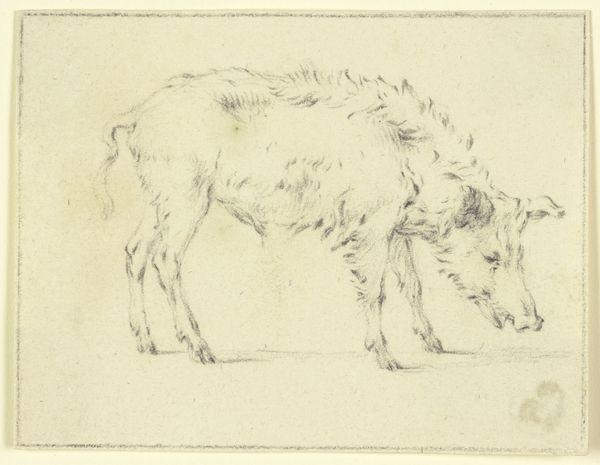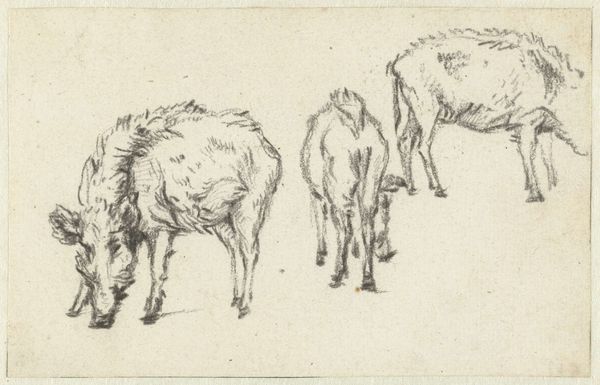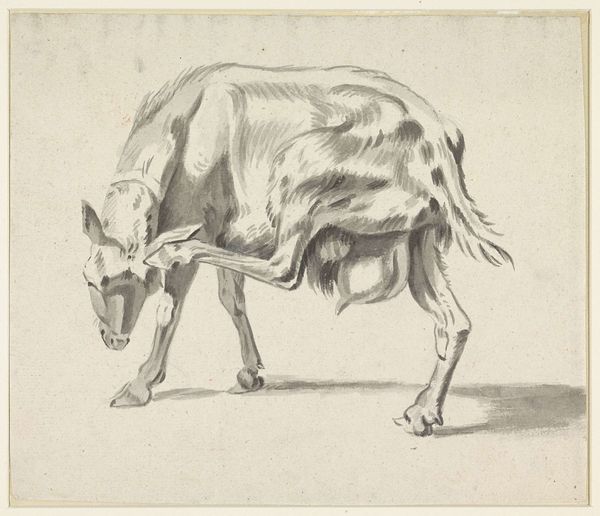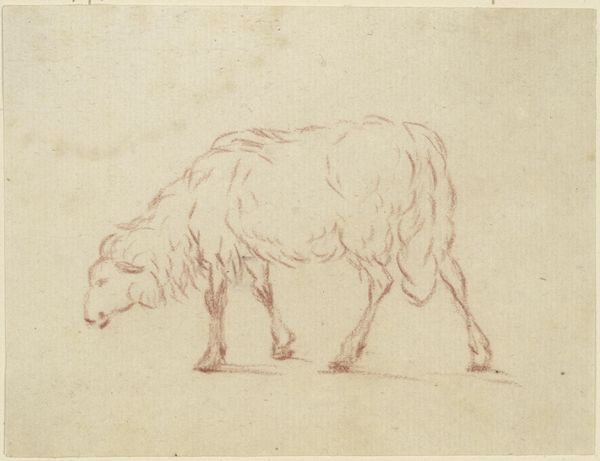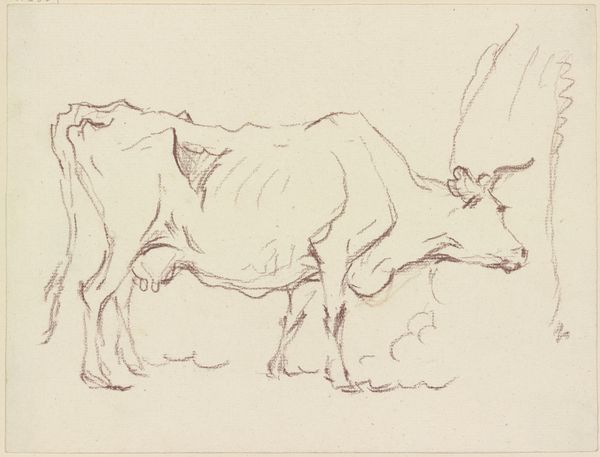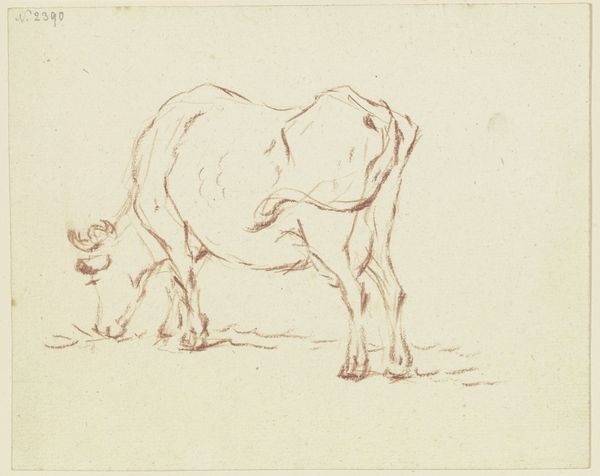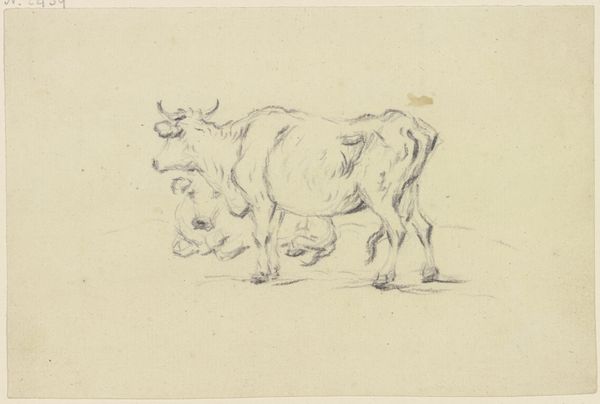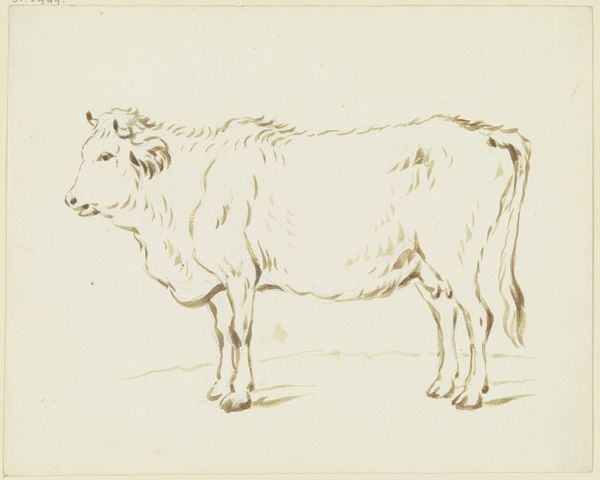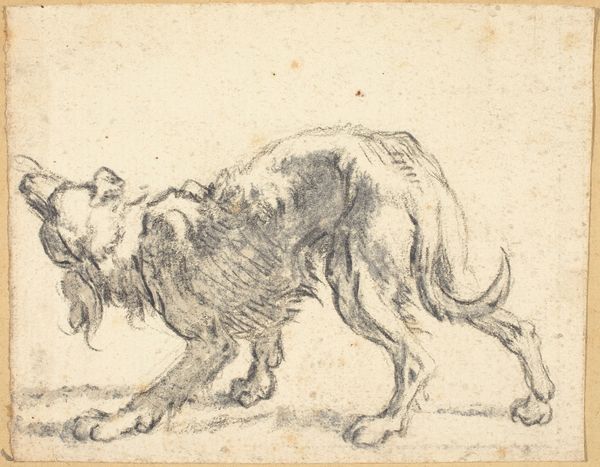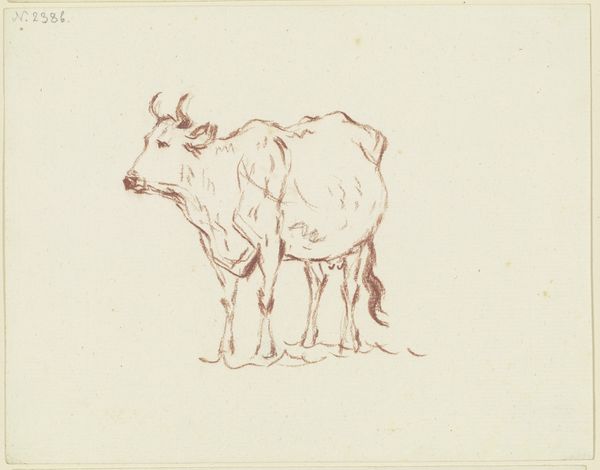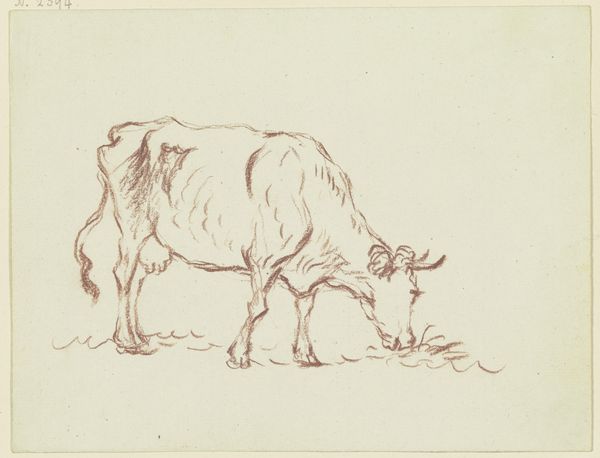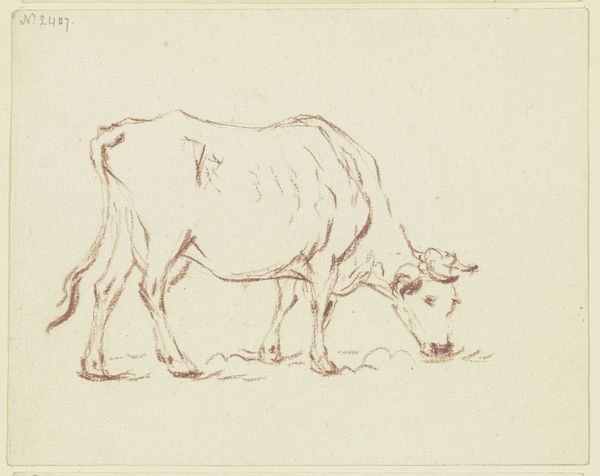
drawing, pencil
#
drawing
#
toned paper
#
light pencil work
#
pen sketch
#
pencil sketch
#
landscape
#
figuration
#
personal sketchbook
#
ink drawing experimentation
#
pen-ink sketch
#
pencil
#
sketchbook drawing
#
pencil work
#
sketchbook art
#
realism
Dimensions: height 65 mm, width 84 mm
Copyright: Rijks Museum: Open Domain
Editor: Here we have Karel du Jardin's "Varken," a pencil drawing from sometime between 1632 and 1678, currently held at the Rijksmuseum. It feels like a very direct and unidealized portrayal. What strikes you most about this piece? Curator: Well, looking at this quick sketch, I’m immediately drawn to considering the pig within its historical context. This isn’t a glamorous, idealized farm animal, is it? This is a working animal, part of the engine of early modern Dutch society. The frankness of the sketch underscores a kind of labor, a kind of being-in-the-world often missing from more celebratory art. Editor: So you see this almost as a socio-economic portrait? Curator: Exactly! And further, consider the artist’s choice of the pig. How does that intersect with contemporary representations of the “feminine” or of certain laboring classes? The pig, throughout history, has often been used as a derogatory symbol, especially connected to bodies deemed “unclean” or “unproductive”. Du Jardin isn't necessarily endorsing those views, but the choice is far from neutral, don't you agree? Editor: I hadn’t thought about that at all. I was mostly focused on the almost…charming quality of the sketch. Curator: Charm, yes, but I would ask: for whom? This "charm" flattens a very loaded depiction of an animal burdened with complex symbolism and difficult social standing. Are we, by calling it charming, implicated in some way? What do you think? Editor: That gives me a lot to think about. It changes the whole feeling of the drawing for me, making it less straightforward and much more complex. Thank you. Curator: Absolutely. It is by understanding these underlying narratives that we find the deeper resonances in art.
Comments
No comments
Be the first to comment and join the conversation on the ultimate creative platform.
